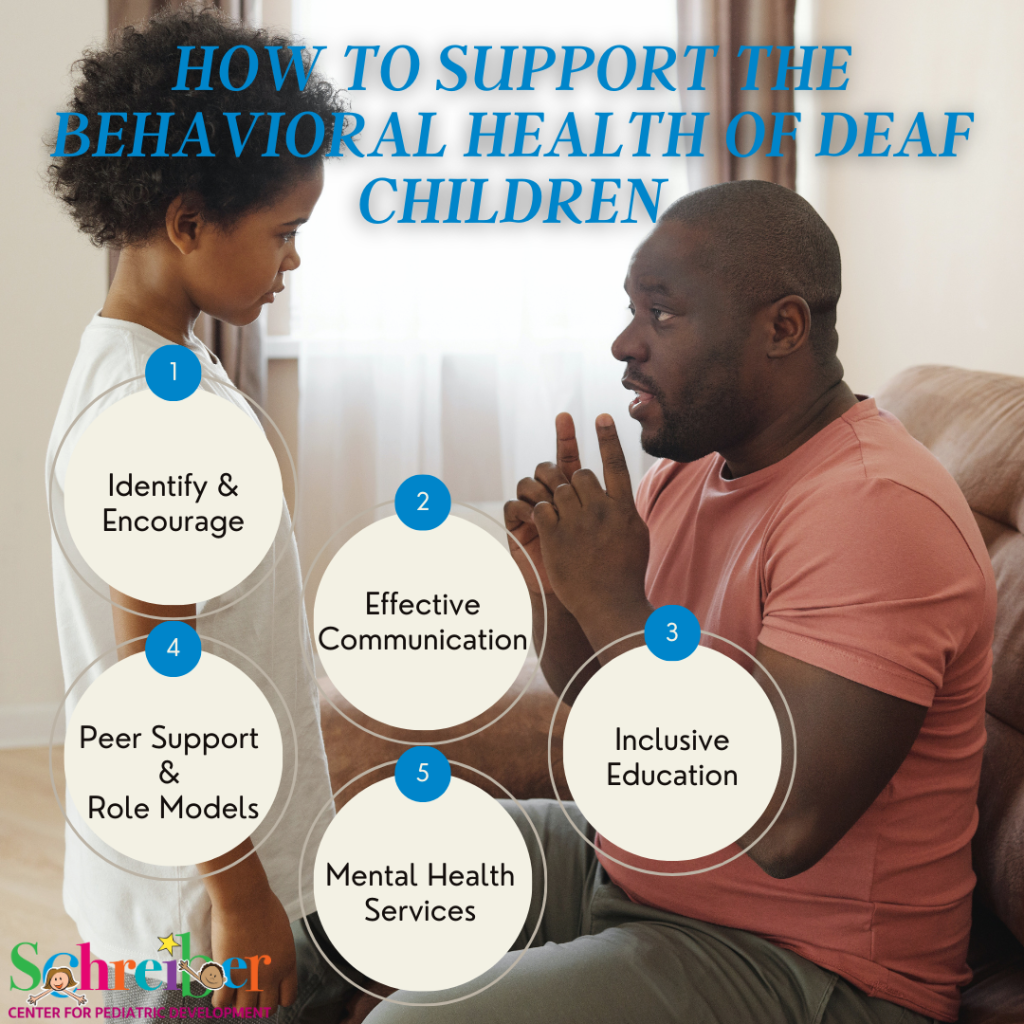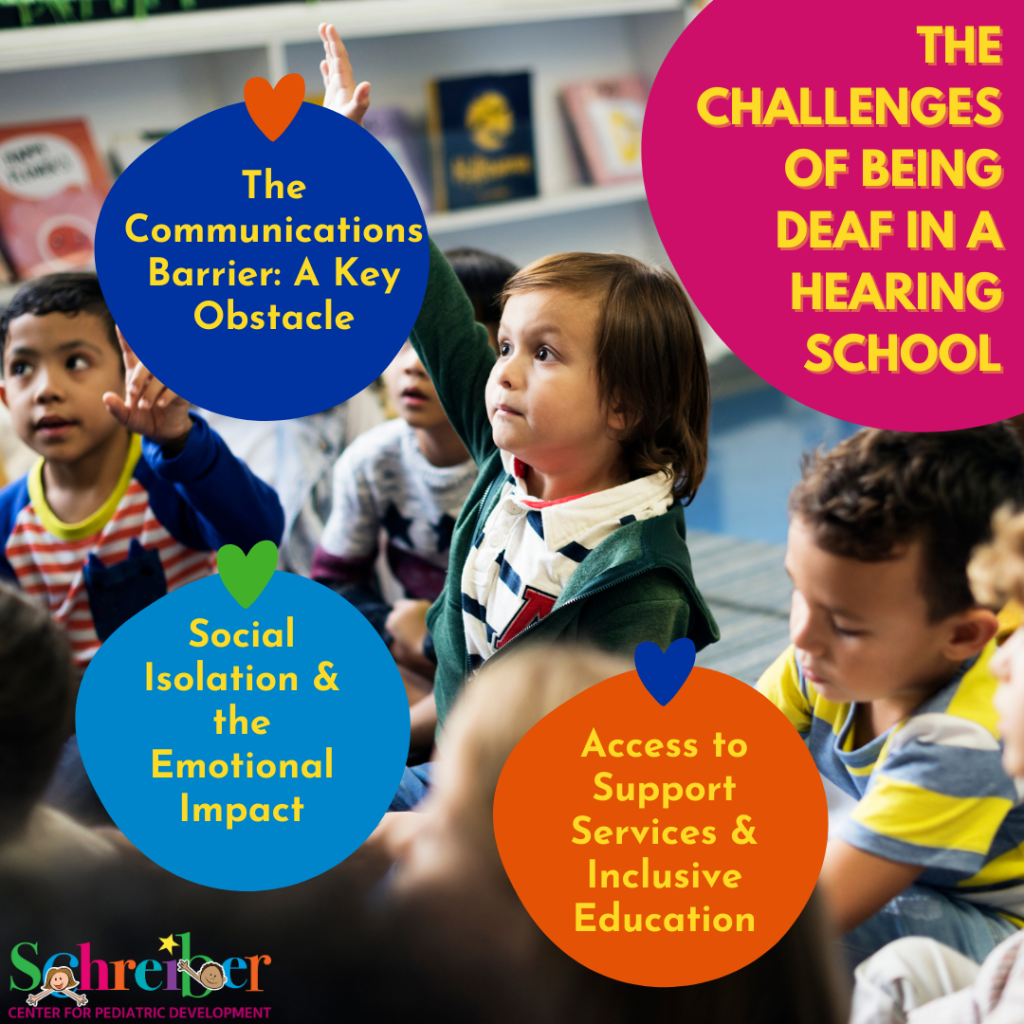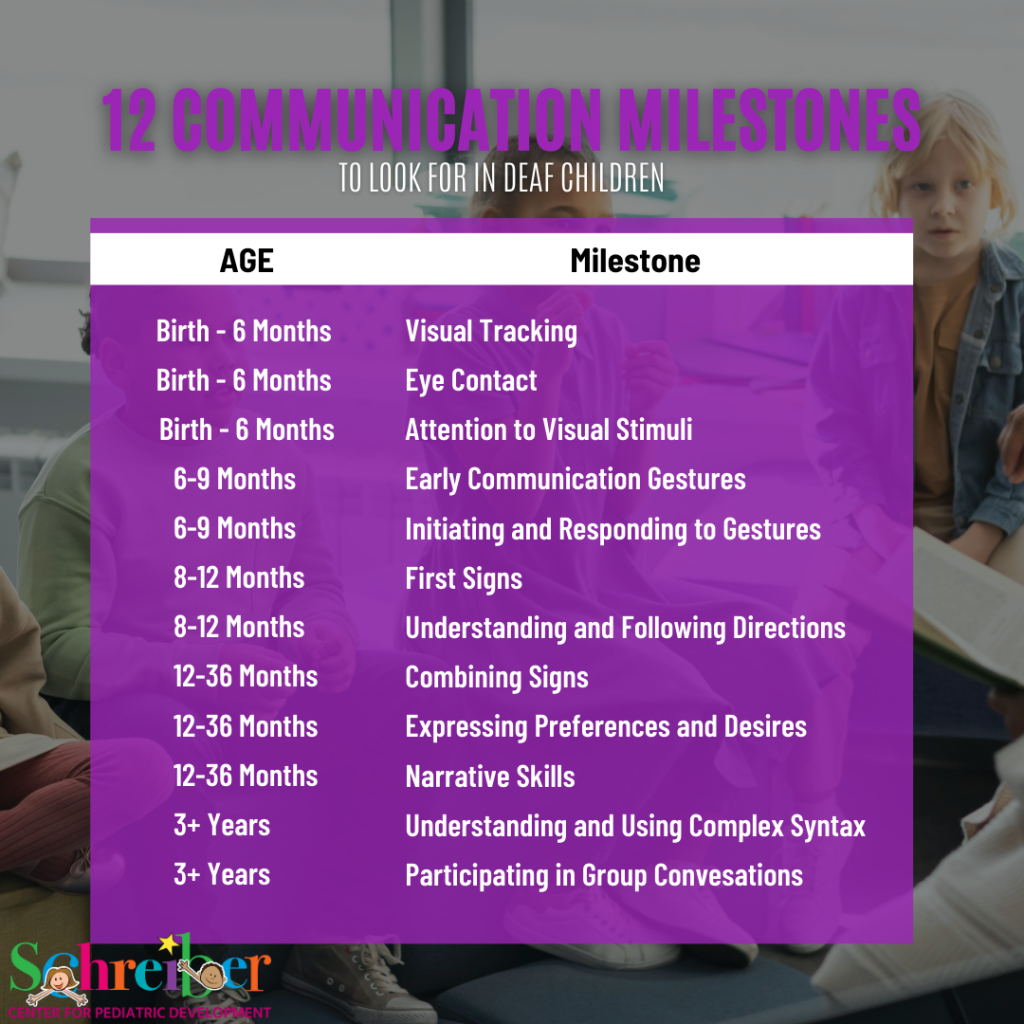Tag: deaf children
How to Support the Behavioral Health of Deaf Children
September 21, 2023Deaf children, like all children, deserve every opportunity to lead healthy and fulfilling lives. However, they often encounter unique challenges that can impact their behavioral health and overall well-being. From social isolation to academic struggles, the mental health journey for Deaf children can be complex. This post will explore the various behavioral health concerns Deaf children may face and look at different strategies to provide the support they need.
Understanding the Challenges
Social Isolation and Peer Exclusion: Communication barriers can lead Deaf children to feel isolated and make it difficult for them to form connections with their peers. They may find themselves on the outskirts of social interactions, leading to feelings of loneliness and exclusion.
Coping with Stigmas and Misconceptions: Deafness is often misunderstood, leading to stigmatization and misconceptions. These misunderstandings can impact a Deaf child’s self-esteem and self-worth.
Anxiety and Depression: The frustration of miscommunication and the pressure to fit in can contribute to anxiety and depression among Deaf children.
Academic Struggles: Inaccessible educational environments and inadequate support for children who are deaf, can lead to their academic struggles. These struggles can cause additional stress and have a negative impact on mental health.
Miscommunication within Families: Communication barriers between Deaf children and their hearing family members can lead to misunderstandings and strained relationships. Without a support system at home, their mental health can quickly decline.
Struggles with Self-Identity and Self-Esteem: Deaf children may grapple with their identity, especially when they feel caught between the Deaf and hearing worlds.
Lack of Access to Mental Health Services: Limited access to mental health services that cater to the unique needs and communication preferences of Deaf children can further exacerbate these challenges.
Strategies for Support
Identify & Encourage: Early intervention is key. By addressing potential issues early on and teaching children who are deaf coping skills and emotional regulation techniques, we can encourage Deaf children to embrace their identity and build self-confidence.
Effective Communication: We strive to ensure that Deaf children have access to communication methods that suit them. You can help by educating yourself and others about Deaf culture and communication strategies to foster understanding.
Inclusive Education: Advocating for inclusive education that allows Deaf children to learn alongside their hearing peers helps minimize social isolation. By implementing anti-bullying programs you can also help prevent and address bullying of children who are deaf.
Peer Support & Role Models: It’s important to create opportunities for Deaf children to connect with peers who share similar experiences. In introducing them to successful Deaf role models you can also help spark their inspiration and guide them to success.
Mental Health Services: Ensuring access to mental health services is one of the best things you can do to support the behavioral health of Deaf children. Specifically those that cater to Deaf children’s communication preferences. Be sure to provide information about these services in accessible formats.
Creating an Inclusive Environment
Supporting the behavioral health of Deaf children requires a community effort. By approaching their challenges with empathy and understanding, we can create environments where they can thrive. Let’s work together to build a world where Deaf children are empowered to achieve their full potential and lead emotionally healthy lives.
If you child is Deaf and you are interested in learning more about how Schreiber’s Pediatric Therapies can help your child visit: http://www.schreiberpediatric.org/therapy-services/
As a nationally recognized pediatric facility, the Schreiber Center for Pediatric Development provides family-centered education and therapy programs for infants, children and adolescents with disabilities, developmental delays, and acquired injuries. Our goal-oriented approach maximizes each child’s ability to function independently within the community.

The Challenges Of Being Deaf In A Hearing School
September 20, 2023School can be a difficult space for any child to navigate, but when you add the additional challenge of being deaf, the difficulties only grow. By shining a light on the unique challenges that children who are deaf encounter in school we hope to help minimize them.
The Communication Barrier: A Key Obstacle
One of the most significant challenge that Deaf children face in school is the communication barrier. This barrier extends beyond the classroom, affecting interactions with both peers and teachers. Deaf children often encounter difficulties in fully understanding and engaging with lessons due to limited access to auditory information. This, in turn, can lead to academic delays, as their access to information is restricted.
Furthermore, a lack of awareness and training among teachers about the specific needs of deaf children can increase these challenges. Without proper training, educators might struggle to adapt their teaching methods to accommodate different learning styles and communication preferences. The result is that the potential of deaf students may go unrecognized and underdeveloped.
Social Isolation and the Emotional Impact
Education is not just about gaining knowledge; it also shapes a person’s social development. For children who are deaf, this can be a double-edged sword. Limited communication opportunities can isolate them from their hearing peers, making it difficult to form friendships and engage in extracurricular activities, clubs, and sports. A traditional classroom settings might not provide the necessary environment for effective communication, which can lead to a sense of isolation.
The consequences of such isolation are significant. Deaf children may face bullying and teasing due to their differences, which can lead to emotional distress and lower self-esteem. The lack of social interaction can hinder their emotional well-being and overall growth.
Access to Support Services and Inclusive Education
Access to appropriate support services is necessary to help mitigate these challenges. Sign language interpreters and note-takers help ensure effective communication and learning for deaf students. However, these services are not always available or properly implemented in educational institutions.
Inclusive education, which ensures all students receive equitable opportunities for learning and participation, is a cornerstone for breaking down barriers. Creating an environment that fosters inclusivity goes beyond just providing services—it entails changing attitudes and practices, and embracing the unique perspectives and strengths that each student brings.
The Power of Sign Language
A key solution to bridging the communication gap lies in the widespread adoption of American Sign Language (ASL). ASL is not just a language; it’s a pathway to breaking down communication barriers and fostering understanding between deaf and hearing individuals. By promoting ASL as a fundamental skill, we can lay the groundwork for a more inclusive and supportive educational experience for deaf children.
Building an Inclusive Future
In celebration of the International Week of the Deaf, it’s crucial to remember that the challenges faced by deaf children in school are not insurmountable. Through appropriate accommodations, specialized support services, comprehensive teacher training, and the promotion of sign language, we can create an environment where all children, regardless of their hearing ability, have equal access to quality education and social integration.
If you child is Deaf and you are interested in learning more about how Schreiber’s Pediatric Therapies can help your child visit: http://www.schreiberpediatric.org/therapy-services/
As a nationally recognized pediatric facility, the Schreiber Center for Pediatric Development provides family-centered education and therapy programs for infants, children and adolescents with disabilities, developmental delays, and acquired injuries. Our goal-oriented approach maximizes each child’s ability to function independently within the community.

12 Communication Milestones to Look for in Deaf Children
September 19, 2023When it comes to the developmental journey of babies and children who are deaf, American Sign Language (ASL) communication milestones play an important role. Knowing what unique milestones to look for in babies, toddlers, and children who are deaf, allows caregivers to better understand the progression of communication skills. This article outlines 12 communication milestones caregivers of deaf children should look for to help guide their children on their unique communication journey through ASL.
Birth-6 Months: Building the Visual Foundation
1. Visual Tracking: From birth to six months, babies who are deaf begin to visually track moving objects and people. This foundational skill paves the way for their engagement in sign language communication.
2. Eye Contact: Establishing eye contact with caregivers and responding to visual cues is crucial for effective communication in ASL. Babies who are deaf develop this ability, enabling meaningful interactions.
3. Attention to Visual Stimuli: Infants who are deaf often display heightened attentiveness to colorful objects and gestures. This is because they rely on their sense of sight for communication input.
6-9 Months: Early Gestures and Interaction
4. Early Communication Gestures: Deaf babies might initiate simple gestures like waving “bye-bye” or raising their arms to be picked up. They could also display signs of wanting more, pointing at objects, or imitating gestures.
5. Initiating and Responding to Gestures: Babies who are deaf begin building the foundation for back-and-forth communication by both initiating their gestures to express needs or interests and responding to gestures from caregivers.
8-12 Months: Transition to First Signs
6. First Signs: The transition from gestures to recognizable signs like “milk,” “eat,” or “mom” starts around 8-12 months old. These initial signs become the building blocks for more intricate communication.
7. Understanding and Following Directions: Deaf babies gradually grasp the ability to comprehend and follow simple sign language directions like “come here” or “give me.”
12-36 Months: Forming Complex Communication
8. Combining Signs: Toddlers who are deaf begin combining signs to form two-word phrases between 1 and 3 years old. This progression allows them to express more complex thoughts and desires.
9. Expressing Preferences and Desires: As toddlers learn more ASL, they use signs to voice preferences, wants, and dislikes. This allows them to increase their ability to actively engage in conversations.
10. Narrative Skills: As they progress and broaden their signing vocabulary children who are deaf are able to convey simple stories and describe events using ASL, nurturing their narrative skills.
3+ Years: Maturing Communication Abilities
11. Understanding and Using Complex Syntax: As children who are deaf grow, their ASL skills evolve to include more complex sentence structures and grammatical features, enhancing their overall communication abilities.
12. Participating in Group Conversations: Proficiency in group conversations, topic tracking, and turn-taking is a significant milestone for children who are deaf using ASL. This skill underscores their ability to engage actively in social settings.
Remember that every child follows their own developmental path. Early exposure to ASL, consistent interaction, and access to a supportive environment are all important to helping babies, toddlers, and children who are deaf develop ASL skills. Celebrating these communication milestones helps to foster a culture of inclusivity, understanding, and effective communication for all.
If you child is Deaf and you are interested in learning more about how Schreiber’s Pediatric Therapies can help your child visit: http://www.schreiberpediatric.org/therapy-services/
As a nationally recognized pediatric facility, the Schreiber Center for Pediatric Development provides family-centered education and therapy programs for infants, children and adolescents with disabilities, developmental delays, and acquired injuries. Our goal-oriented approach maximizes each child’s ability to function independently within the community.
